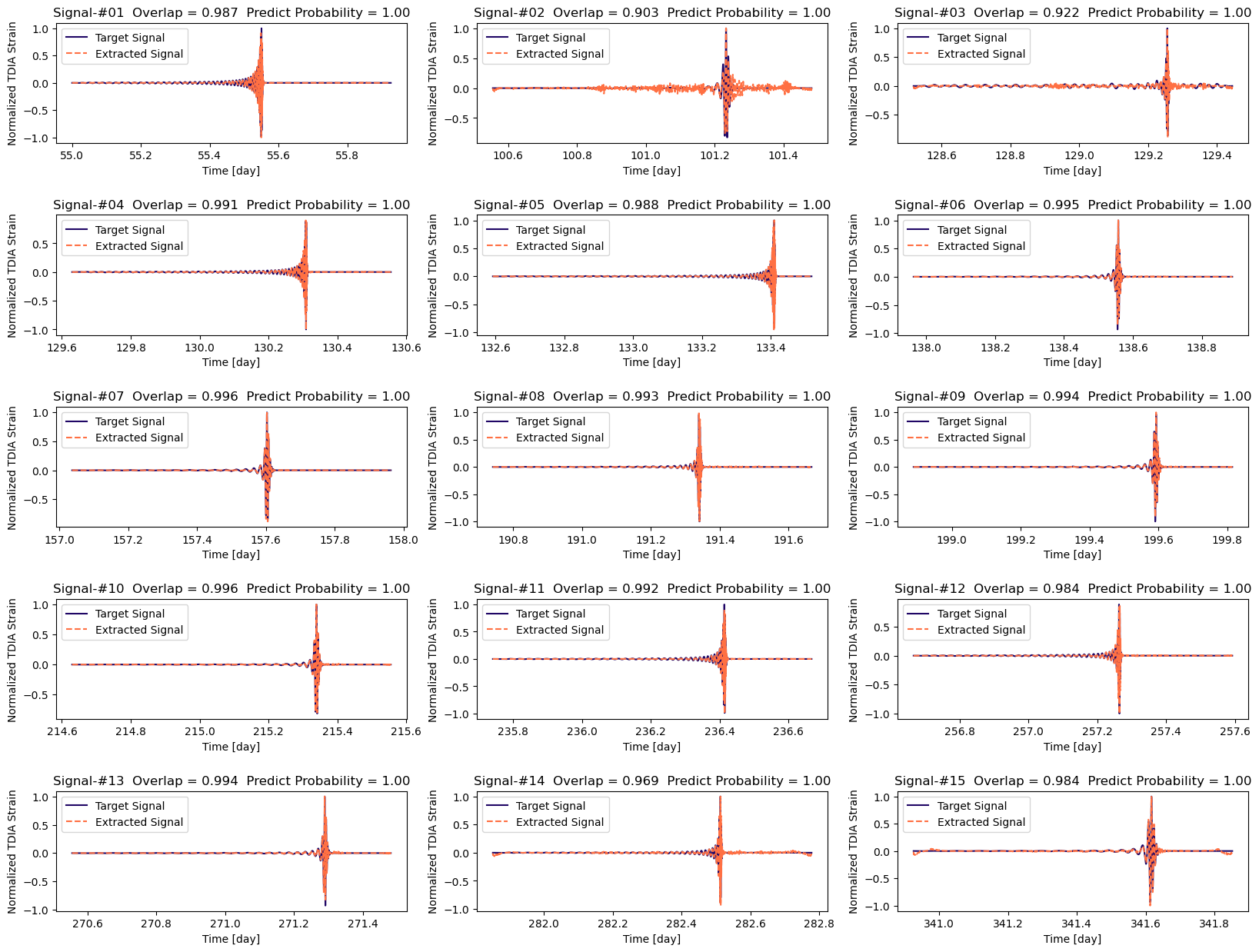Welcome to the official repository for our paper at https://www.nature.com/articles/s42005-023-01334-6. We developed the model using the PyTorch framework. Our aim with this repository is not only to share our implementation but also to provide a comprehensive guide, ensuring it's user-friendly and easy for others to build upon.
Space-based gravitational wave (GW) detectors will be able to observe signals from sources that are otherwise nearly impossible from current ground-based detection. Consequently, the well established signal detection method, matched filtering, will require a complex template bank, leading to a computational cost that is too expensive in practice. Here, we develop a high-accuracy GW signal detection and extraction method for all space-based GW sources. As a proof of concept, we show that a science-driven and uniform multi-stage deep neural network can identify synthetic signals that are submerged in Gaussian noise. Our method has more than 99% accuracy for signal detection of various sources while obtaining at least 95% similarity compared with target signals. We further demonstrate the interpretability and strong generalization behavior for several extended scenarios.
- Showcase of the denoise performance of different type of GW waveform:
- Test on LDC2a dataset
Our model is developed on top of the SpeechBrain toolkit. To set up the environment and install necessary dependencies, run the following command in your terminal:
# For Linux
conda env create -f environment.yml
# For macOS
conda env create -f mac_env.yml Additionally, you need to install the FastEMRIWaveform package to generate the EMRI dataset. Follow the instructions provided on their repository to complete the installation.
To generate datasets for training, you can use the following functions in gwdataset.py:
generate_emri_dataset()
generate_smbhb_dataset()
generate_bwd_dataset()
generate_sgwb_dataset()
generate_noise_dataset()After generating the dataset, specify the path to the dataset folder and the dataset file names in the configuration file se-mlp.yaml:
data_folder: path-to-dataset-folder
data_hdf5: dataset-file-name
noise_hdf5: pure-noise-dataset-file-nameFinally, train the model by running the following command in your terminal:
python train_se_mlp.py se-mlp.yamlIf you find our code useful, please consider citing the following papers:
@article{zhao_space-based_2023,
title = {Space-Based Gravitational Wave Signal Detection and Extraction with Deep Neural Network},
author = {Zhao, Tianyu and Lyu, Ruoxi and Wang, He and Cao, Zhoujian and Ren, Zhixiang},
year = {2023},
month = aug,
journal = {Communications Physics},
volume = {6},
number = {1},
pages = {212},
doi = {10.1038/s42005-023-01334-6},
}We would like to express our gratitude to the following repositories for their invaluable contributions to this work:





